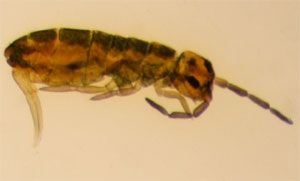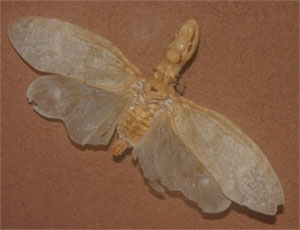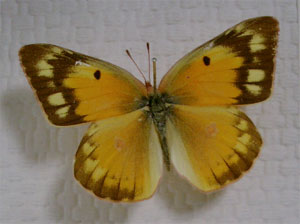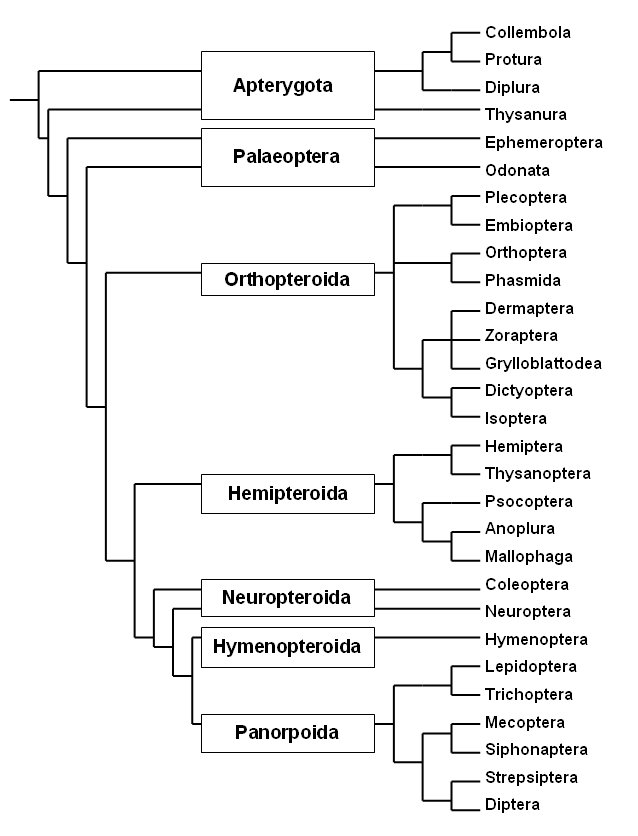

Click to view a section of the display
THE CLASS INSECTA
Insects are the only arthropods with wings. The ability to fly has played an important role in their spectacular radiation on land. Modern insects are highly adapted to an immense range of habitats throughout the world, from deserts to snowfields, from rainforest to savannah. Adaptations for burrowing, climbing, jumping, ecto- and endo-parasitism have all occurred, leading to spectacularly different adult forms. Juvenile insects display an extensive variety of adaptations, from aquatic carnivorous nymphs, which may live for several years, to immobile, short lived, worm-like larvae which cannot feed themselves.
Insects are mainly regarded as pests, competing against humans for resources, and transmitting devastating parasitic diseases like malaria, sleeping sickness and river-blindness. As parasites and vectors of diseases like the Plague, insects have had a significant impact on human history.
However, insects are also vital to man. They pollinate plants for the fruit and vegetable industries, and provide honey, silk, dyes and royal jelly. Insects are important predators on other arthropods, and vital scavengers and saprophytes. They are also crucial elements of food webs, upon which many other phyla depend as they are included in amphibian, reptilian, avian and mammalian, including human, diets.
Insects are a highly successful class, with well over 750,000 species described to date, compared with just 4,000 mammalian species. Three quarters of the world's insect species are less than 6mm long, but the largest may be 19cm long, and some have wingspans of up to 30cm. Insect size is limited by their need to moult and by their breathing system. They must be able to support their own weight and structure while the new, soft exoskeleton is hardening, and risk desiccation due to evaporation across their surface. The largest insects occur in the tropics where the high humidity reduces this problem.
Phylogeny of the Class Insecta
The phylogeny of the different orders of insects has been disputed for the last two hundred years and numerous attempts have been made to recreate the relationships and divergences that have occurred since the insects arose in the Devonian era. Many of the divisions between the orders occurred over 230 million years ago. Since then the insects have adapted to a wide range of ecological niches.
With genetic analysis complementing morphological evidence, a reasonably clear picture of the phylogeny is emerging, although this is only a hypothesis and can never be proved. This display is based on current ideas of insect phylogeny, most of the orders are not disputed, but controversy still surrounds the position of the Strepsiptera, and the precise arrangement of the Orthopteroid orders (Kristensen 1991, Whiting and Wheeler 1997). The specimens displayed here reflect the progression of the 29 orders of insects: from Apterygotes, which are primitive and wingless, to Pterygotes, which are more advanced and winged; from Exopterygotes, which undergo partial metamorphosis, to Endopterygotes, which undergo complete metamorphosis.
APTERYGOTES
Entognathous Apterygotes
Ectognathous Apterygotes
|
 |
EXOPTERYGOTES
Palaeoptera
Orthopteroida
Hemipteroida
|
 |
ENDOPTERYGOTES
Neuropteroida
Hymenopteroida
Panorpoida
|
 |
Click to view by order or subclass







